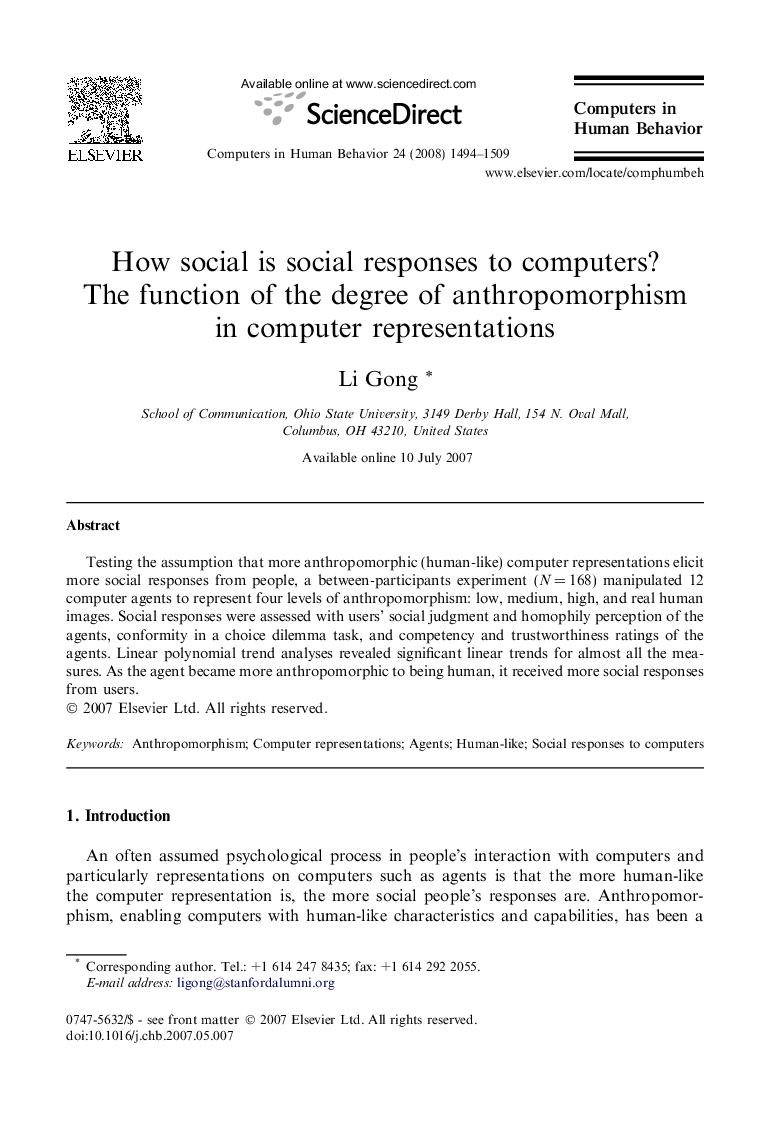| Article ID | Journal | Published Year | Pages | File Type |
|---|---|---|---|---|
| 352230 | Computers in Human Behavior | 2008 | 16 Pages |
Abstract
Testing the assumption that more anthropomorphic (human-like) computer representations elicit more social responses from people, a between-participants experiment (N = 168) manipulated 12 computer agents to represent four levels of anthropomorphism: low, medium, high, and real human images. Social responses were assessed with users’ social judgment and homophily perception of the agents, conformity in a choice dilemma task, and competency and trustworthiness ratings of the agents. Linear polynomial trend analyses revealed significant linear trends for almost all the measures. As the agent became more anthropomorphic to being human, it received more social responses from users.
Keywords
Related Topics
Physical Sciences and Engineering
Computer Science
Computer Science Applications
Authors
Li Gong,
